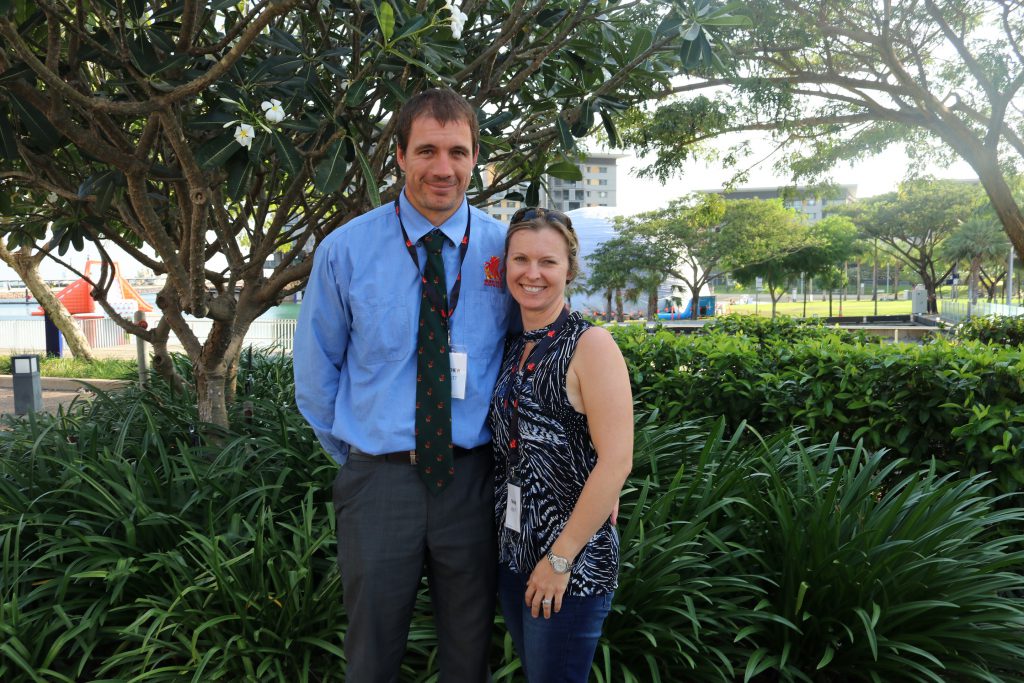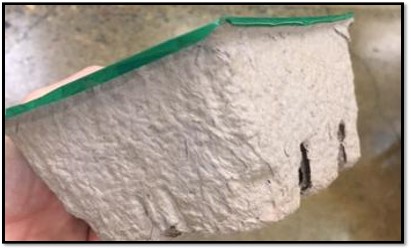2016 Nuffield Scholar Matthew Abbott recently returned from his final international tour as part of his ‘life-changing’ Nuffield experience, where he focussed his attention on value adding through product branding. An organic banana farmer from Mena Creek in Far North Queensland, Matt gives an insight into the new technologies and branding innovations he discovered during his latest Nuffield adventure which took in Japan, Italy, Spain and the United States.
THE CHALLENGE FOR AUSTRALIAN BANANA GROWERS
“The Australian banana industry has periods of oversupply, where production increases, but value decreases, so we are essentially growing more and getting paid less,” Matthew explains.
“We are lucky that 94 per cent of Australian households buy fresh bananas and consume around 16kg per person per year. This is quite high and leaves limited potential to increase domestic consumption. The challenge for us as farmers is how we increase returns to improve our financial viability.”

Darwin. Matt is a third generation farmer who operates Rabbit’s Organic Bananas with his family in far North Queensland.
When you embarked on your latest Nuffield tour you were keen to investigate how banana growers can achieve a higher return on investment, by looking at ways to increase product value through branding. What did you discover?
During my travels I visited Japan, Italy, Spain and in the US, I went to Florida and California. I visited producers, marketers, universities and numerous retailers, looking at branding, including packaging in supermarkets. I was especially interested in retail displays and to see how products were branded, the number of lines and categories available and the price differences. I was also interested in looking at new technology in regards to branding opportunities and value adding.
In Japan, pre-packaged bananas and product branding is massive. How do they do things differently to our industry here in Australia?
In Japan a lot of produce was in plastic packaging driven by food safety and convenience. Plastic packaging has been part of the Japanese culture for a long time, but they do recycle 70 per cent of their plastic waste, which is considerably higher than most other countries. Everything was branded and was commonly branded by farm or provenance. Bananas are packed either individually or in clusters of three or four bananas.
In one supermarket there were six different product lines, some even from the same company. They had five different price points, all were essentially Cavendish bananas and some of these lines were up to 75 per cent more in price. Branding was used to highlight the difference in taste, ripeness, size and quality. These qualities are what Japanese consumers see value in. It is interesting that taste is so important, if you compare that to Australia where the majority of bananas are unbranded and there is limited emphasis on taste. A good example of this is when looking at product specifications for bananas for the big retailers, taste and flavour do not get a look in.
CARVING A NEW PATH
You also visited the United States where the majority of bananas sold are also heavily branded. You believe the ‘take home’ message from Japan and the US is that branding is very important to identify your product and increase value. Why though will you not be following their example?
In our organic business we are conscious of playing our part and looking after the environment and not adding additional packaging waste. Therefore, I don’t believe any of the branding examples would be applicable for our organic business. Bananas in their natural form have many advantages, the main being convenience and they are already in an environmentally friendly package.
As farmers we are a very important part of the food chain. We grow safe, healthy food for the rest of the population to eat. It is important that we start to recognise the value of what we add and what makes our product unique. The challenge for our business is how do we brand our product and how do we get value from what we do.
TAKING A LEAD FROM SPAIN
During your tour of Spain, you visited a company called Laser Foods, which uses latest laser technology to print brands directly onto the skins of fruit. This is something you’re currently trialling on your own farm. Can you tell us more?
The laser technology uses light to mark the fruit, without damaging the skin of the banana or pulp inside. The machine also has artificial vision for identifying the area to be marked. Another key point is the application can be done on farm. It is important for the farmer to be the one adding and receiving the value. It allows branding directly onto the product and removes the need for added packaging.

When initially marked it is barely visible (pictured above—banana pictured on the bottom). And then gradually the image gets darker (as pictured on banana on the top).
The size of the brand will impact the time it takes to mark. The banana pictured on the bottom, the font is in normal text and took point one of a second to mark, and the one on the top the text is in bold and took 1.2 seconds to mark.
Similar to laser ink, it doesn’t use packaging to brand. The ink is edible which is very important for food safety and quality assurance standards. A print head with an electronic eye senses the fruit, which triggers the printer to mark the fruit. It’s quite a simple yet effective system.
The challenges with this is developing a system to support application and adapting it to current packing systems and ensuring the ripening process doesn’t affect the ink integrity and we are currently doing trials for this in our shed at the moment.
BIODEGRADABLE PACKAGING—LEADING THE WAY IN USA
Your trip wasn’t all about bananas and you got some great insight into biodegradable packaging from RaboResearch when marketing tomatoes?
I spent a day with Rabo vice-president and senior analysis Roland Fumasi. He indicated the importance of convenience for consumers when considering product choice. They will choose environmentally sustainable packaging before purchasing a product without packaging. Two features of the tomato packaging (pictured below) is that it’s both recycled and
biodegradable. And it still hits the mark of being convenient for consumers. It still has plastic on the cover, but they have greatly reduced the amount of plastic.

VALUE ADDING
You also visited a citrus company— Uncle Matt Organics—which produces both fresh and processed products. What did you learn from them when it comes to value adding?
Their company focusses on high quality and consistency. They developed a brand and are now able to demand a premium over their competitors. They also maximise their waste by having multiple products. For instance, premium fresh fruit, premium fruit juice and oil which they extract from the skin of fruit.
There are clearly high value and low value products which bananas can be used for. For instance, banana flour—which has been developed in North Queensland by a banana grower—is a great example of increasing value. Other banana products including purées, which are used in bases for drinks, baby products, children’s snacks and flavour additives. And, whole banana pieces, used frozen and dried, or for baby products.
ITALIAN INVENTION
In Italy you met a company that manufacture fruit processing equipment. What potential innovation do they offer for banana growers?
They have developed a banana peeler to be used in making puree. The machine gets around a 55 per cent recovery rate, the pulp then goes through another machine to separate out small pieces of skin that end up in the pulp.
This could have added benefits for Australian producers, due to our higher cost of labour in many cases, compared to other banana producing nations.
EXPORT OPPORTUNITIES
You have done some extensive travel during your Nuffield experience, do you see any significant opportunity in export?
Definitely. Our fresh domestic banana market is in a state of over-supply, therefore export markets have huge potential to provide market opportunities. These opportunities could be in fresh or value added.
But we need to focus on high end and high value to compensate for our higher production costs.
However, Australia has an advantage over our competitors. We have a very high level of food safety, very high quality standards, very reliable and trustworthy. The Australian brand is strong and very well respected across the world.
The middle class in Asia is growing at a phenomenal rate. With Asia’s close proximity and food quality issues this presents real opportunity for us. There are lots of good examples of Australian industries doing this.
